Figures & data
Figure 1. Colonies grown under the normal of compound-stress conditions. (a) Photographic depiction of strains exposed to diverse chemical stress agents; (b) Relative Growth Inhibition (RGI) of strains in response to cell wall interfering agents (CGR and CFW), oxidation stress (H2O2 and MND), and DNA damaging agents (HU, Mms, and CPT); Asterisked bars in each group significantly differ from unmarked bars (Tukey’s HSD, p < 0.05). Error bar: SD from three replicates.
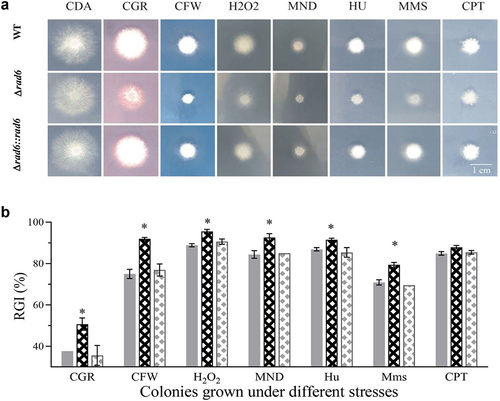
Figure 2. Roles of Rad6 in regulating conidial property and stress tolerance. (a,b) Conidial size (measured by SSc), density (measured by FSc), and germination rate; (c,d) Conidial tolerance to UV-B irradiation and heat shock at 45°C. (e) Strain tolerance to 42°C heat shock. Asterisked bars in each group significantly differ from unmarked bars (Tukey’s HSD, p < 0.05). Error bar: SD from three replicates.
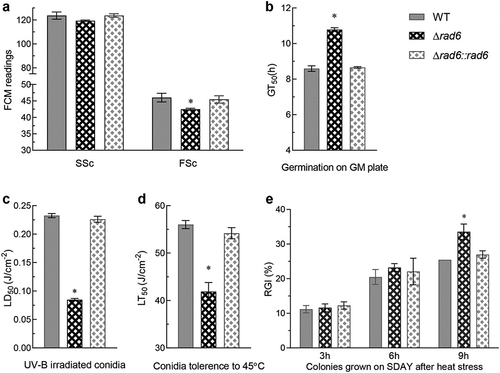
Figure 3. The vital role of Rad6 in the pathogenetic of Beauveria bassiana. (a,b) Survival rates of insects in injection and immersion Modes; (c,d) Median lethal time (LT50) of insects in injection and immersion modes. (e) Images of fungal outgrowth in two infection modes. Asterisked bars in each group significantly differ from unmarked bars (Tukey’s HSD, p < 0.05). Error bar: SD from three replicates.

Figure 4. Cellular events related to virulence. (a,b) In vivo hyphal body concentration of two infection modes; (c,d) In vitro blastospore production and biomass; (e,f) Activities of SOD and CAT enzymes; (g,h) Activities of Pr1 proteases and extracellular (cuticle-degrading) enzymes (ECEs). Asterisked bars in each group significantly differ from unmarked bars (Tukey’s HSD, p < 0.05). Error bar: SD from three replicates.
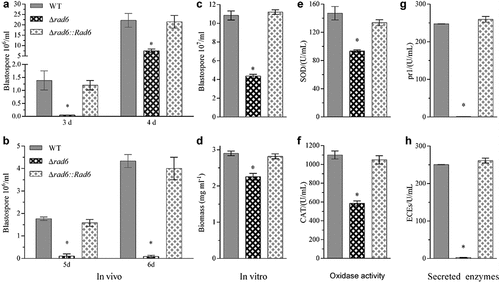
Figure 5. Transcriptomic insight into the regulatory role of Rad6 in B. bassiana. (a,b) Volcano plots under normal and oxidative stress incubation conditions, respectively; (c,d) KEGG analysis of cultures from normal (left) and oxidative stress (right) strains. (Note: The ordinate represents the KEGG pathway, and the abscissa ordinate represents the significance level of enrichment. The smaller the FDR, the greater the -log10 (FDR) value, indicating a more significant enrichment of the KEGG pathway.).
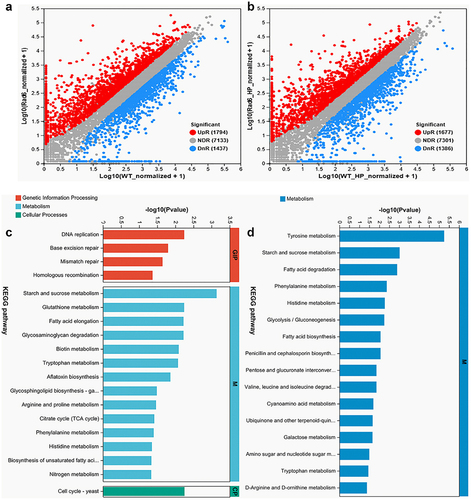
Figure 6. Regulation of Rad6 on the transcriptome of B. bassiana under normal and oxidative stress. (a) Venn diagram of differentially expressed genes between WT and Rad6 under CDA and H2O2 cultures; (b) GO analysis of differential gene sets up-regulated in Δrad6 but unchanged or down-regulated in WT between CDA and H2O2 groups; (c) GO analysis of differential gene sets down-regulated in Δrad6 but unchanged or up-regulated in WT between CDA and H2O2 groups.
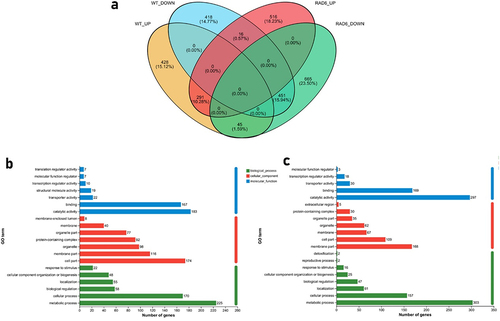
Supplemental Material
Download MS Word (540.1 KB)Data availability statement
All data generated or analysed during this study are deposited in figshare, DOI: https://doi.org/10.6084/m9.figshare.25699368. The transcriptome sequencing data were deposited in NCBI (https://www.ncbi.nlm.nih.gov/bioproject) database with the accession number PRJNA1037315.
